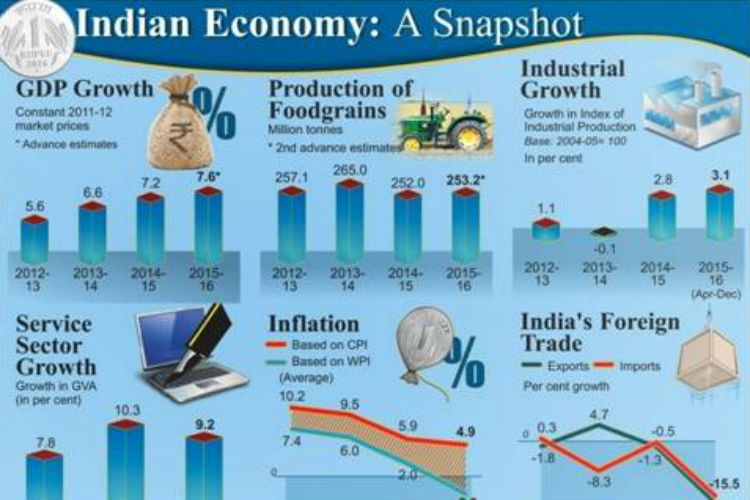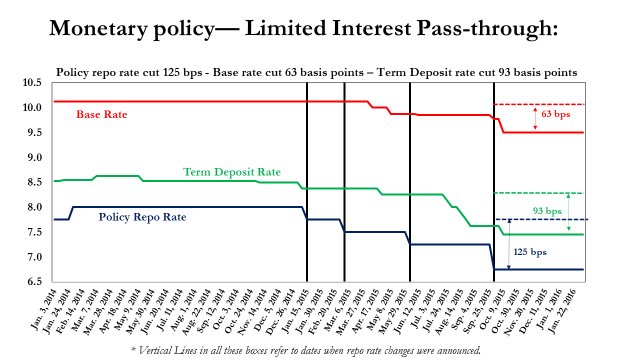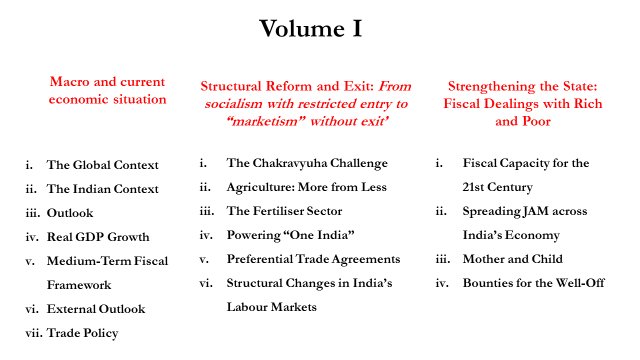Fortunately I am associated with one of the institutions (who have written this report and i have some real good contribution to it) in Real Life and thus my love for France stems from a deeper loyalty of Indo French relations and personal experiences.... So this does opens up a avenue of information which i had never imagined in my life when in past i worked with an India based bank before. And a stint in a foreign conglomerate abroad for quite some good time opened my eyes how we as a country for so long have been protected purely bcz we have such a big domestic demand and we were really happy living with that huge base of consumers. But world today has changed drastically for India as well
Inspite of hope that we have given to the whole world, the actual data is not very encouraging. The third quater or Q3 as we call it for most FIs wont show very drastic growth. The FIs will show some profit but there is a deeper issue of bad loans across the sectors which are either hidden, restructured or ever greening done to hide. The real bleeding of this issue is not yet seen. A good example is check for public sector banks like PNB (Punjab National Bank).. Its in very terrible shape.. There are dozen such banks in India going through a realisation phase where the monies lended is not gonna come back soon and they cant keep on giving a new loan to hide old loan dues forever. The provisions will shoot up and eat up the profit but that being a public entity will raise so many eyebrows that the whole system will suffere due to a contagion effect.
Take for example the power sector in India. Numerous FIs have given huge finances to this sector. Its having issues like
- Issues of cyclical commodity price surge leading to increase in input costs
- Discom issues and huge financial stress seen on them
- Structural issues with inefficient systems
Fixing discoms needs
- Capital
- political will at state level
- Bigger political will at center level to work with state to effect pricing changes
We always say demand is want backed by purchasing power. Unfortunately money especially from FI credit is almost stagnant to this sector.
On top we have bad loans or NPA issues. It puts us to the important question how long we can depend on economic growth to kind of put all these sectoral issues under carpet.
Take another example.. Corporate earnings is a subset of GDP of majorly listed entities. But India as a country has a much larger base of unlisted companies, Now consider a scenario where unlisted entities doing much better than listed ones. In such a case GDP growth will be much higher in true sense. But then also consider the reverse scenario. In such a case the growth that India is showing and giving the whole world may actually be much lower as real bleeding is well hidden among unlisted entities.
You mentioned job cuts.. You know most corporates in India may well give a max 10.8% average salary hike (source :
India Inc to Dole Out 10.8% Salary Hike in 2016: Report - NDTVProfit.com . Even this estimation to me looks at higher side.and real salary post inflation adjustment may be much lower than last few years(but thats average for all sectors.)
Most of the important sectors like FIs in my personal estimate wills be avg salary hike at just around 7% and bonus (based on profitability if any) will be less than 1 multiple of months salary.Imagine a inflation rate at say 5 or 5.5%. So the real salary growth is in the range of 1.5-2% post inflation adjustment.
On top there would be job cuts, postponement of hiring and replacement of 2 high salary profiles with one medium salary profile. Imagine this contagion effect on the youth who are beginning their career or are less than say 5 years in experience.
If GOI does not initiate a massive restructuring across core sectors and increase investments, we are looking at a much bigger issue in India.Unfortunately the resolve shown by ruling majority in parliament has not translated into meaningful contribution for such structural changes. We may see USD/INR closer to 69 owing to maximum 5% deviation from FY beginning before RBI steps in and stops the plummeting currency. Indian tourists who flock the world will try more domestic vacation due to currency issues and this implies its good for domestic market but the effect on global tourism industry, airlines and hotel industry - you can imagine how such actions will have a bull whip effect.
India having a protectionist regime have always saved herself from the world market. But that issue cannot be sustainable for protecting the interests forever.
Take a look at China.. Its investments outside economy of herself has been in places which can fuel its new demands, shorten and raise efficiency in the supply chain and most importantly try and bridge the gap of reaching markets. These are important steps needed for re-composition as i have mentioned before. The effect of controlling a massively expanded economy and reworking the efficiency levles for demand supply gap and cost of production and avenues to reach market is a very important aspect. Thats why i said Chinese leadership is very important for their role os shaping the economic might for coming decades.
Two major factors which work in CHina's favour has been the developed infrastructure they had mustered and continue to develop portion and secondly the massive investments it makes in many domestic projects espeically in R&D. The China market is already a consumers market and no economy from world will not like to take advantage out of it.
Trans Pacific Partnership comprising of 12 nations 4 original and 8 negotiated to become members
Source - Google search for images.
The TPP is suppose to have 40% of the world economy. But if you see their members like Chile, New Zealand, Singapore and Brunei - original members and Australia, Canada, Japan, Malaysia, Mexico, Peru, the United States, and Vietnam, joined them later. TBH limited trade is being done between these members and they majorly deal with Internet freedoms, intellectual property, regulations and other subjects etc which are actually not very important to understand from Trade angle. Its more like a controlling mechanism which comes as apart of feedback loop in a control system. But what it effectively lacks is the markets which has the potential for outcomes chiefly China, India and other economies where potential is huge. Some good points are also mentioned in Wikipedia on this
Trans-Pacific Partnership - Wikipedia, the free encyclopedia
The other agreement TTIP or Transatlantic Trade and Investment Partnership infact involves almost 45-50% of the world economy. Its effectively an extension of TTP as its majorly EU and USA. At least both these entities have solid trade numbers every year and are highly interdependent. But again these numbers are based on interdependency on economic terms but still it does not give access to the potential markets with largest consumers like China and India.
In another opinion, it looks like both TTP and TTIP are just NATO alliance in trade form.
If i remmebr correctly a year back in some newspaper a view about such agreements on India was covered. One important aspect discussed was medicines and its cost and access.. The IP rights and access by Consumers in China and India where lcoally produced same molecule can be far more cheaper versus these treaty protected pharma majors contention was seen as a driving force of healthcare costs.
I remember a speech By Sujata Mehta from MEA, organised by FICCI. She had spoken about issues that will go well beyond trade in goods and services into areas such as transparency,regulatory issues, IP, labor laws, environment, investment, government procurement, and dispute settlement mechanisms. In Her opinion she commented that unless Indian industry change their overall perspectives and the way they operate, they wont be able to meet requirements as stated by both these treaties. In essence we wont be able to enlarge our trade basket nor we will be able to take any benefits out of it. On top such Trade treaties ensure that dominant forces like USA and EU can dictate terms which are detrimental for countries like India and China.. Combine this with recent Environment regulation of or Paris Climate accord, you see how developed economies in such treaties dominantly ask to control environmental issues which will have a direct impact on local economy's supply side and will impact labor side harshly.
Thus in essence, these treaties pose challenges and issues but since they dont have directly India and China as members they are not in a unique position as they believe themselves. Their might is well known but cannot sustain their might unless they have their markets for such economic might... Unless these treaty members market can actually replace China and India completely within their domestic demands among members, it cannot help them completely. But on the other side the strict rules and standards will create minor issues for India and China who would definitely engage with them and WTO to come to a better understanding and work out a meaningful acceptability.
@Spectre














